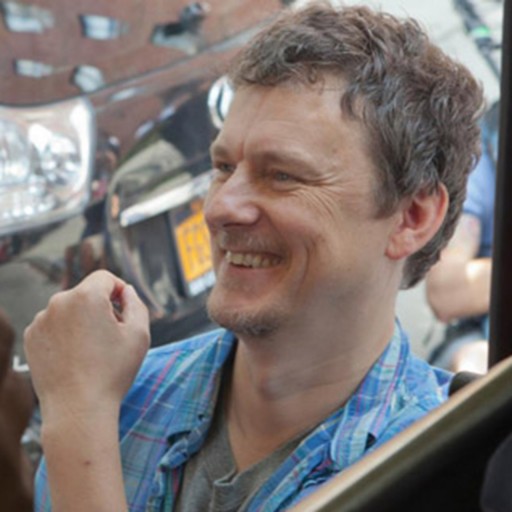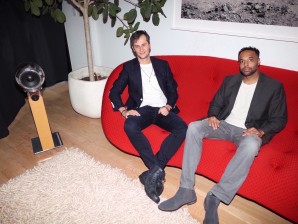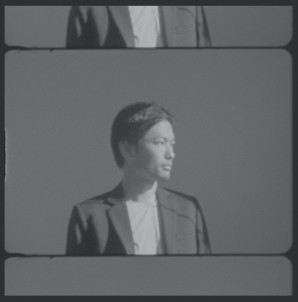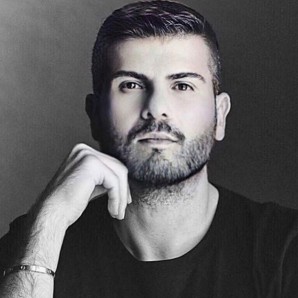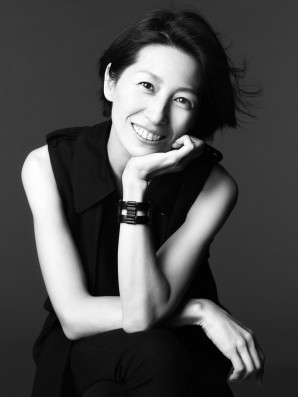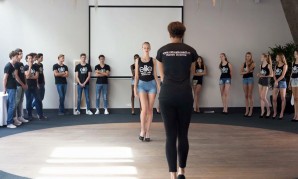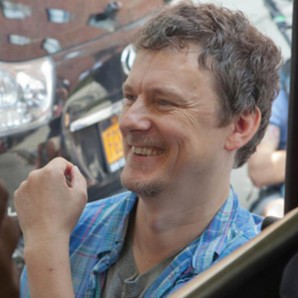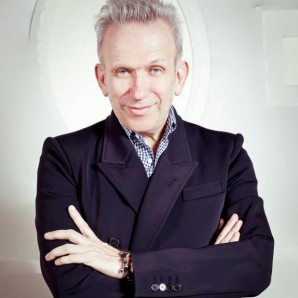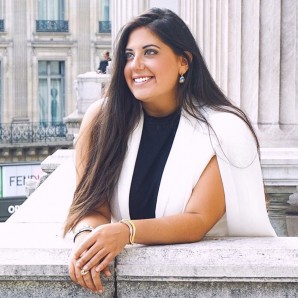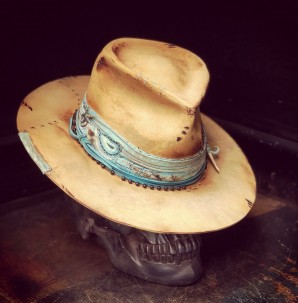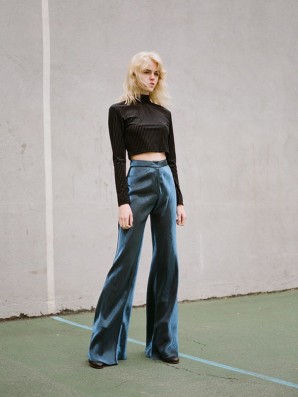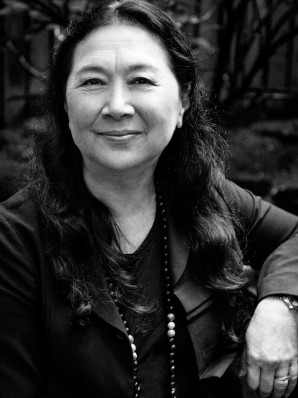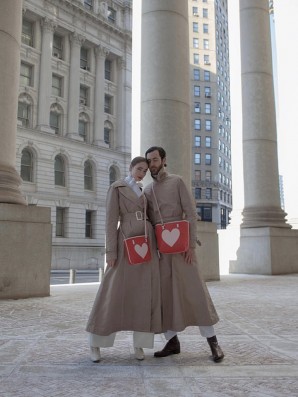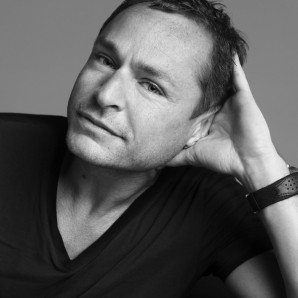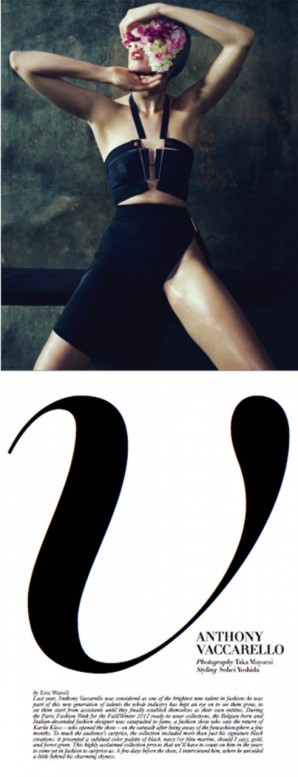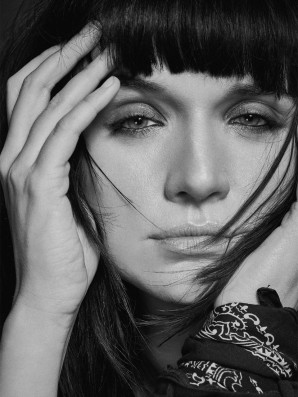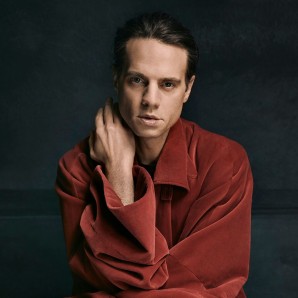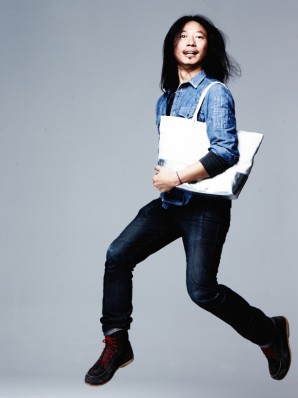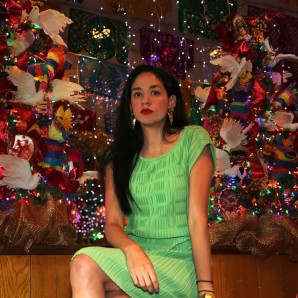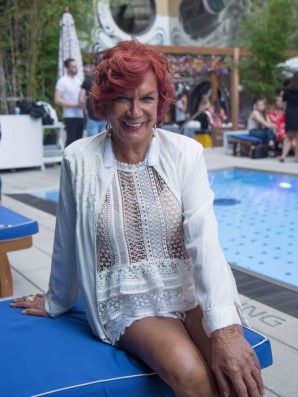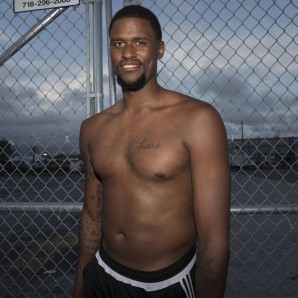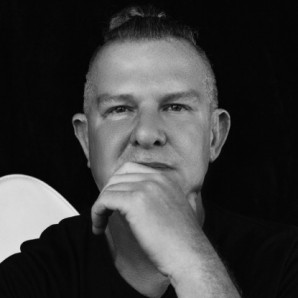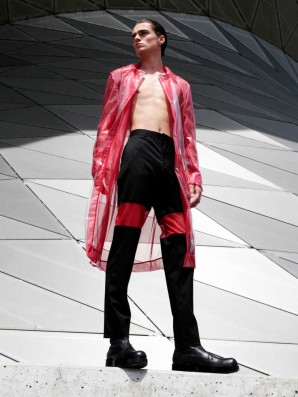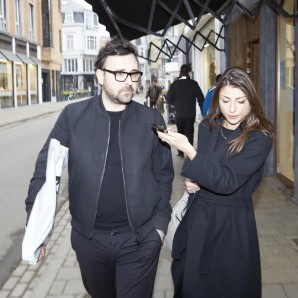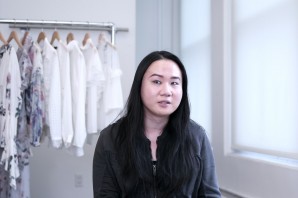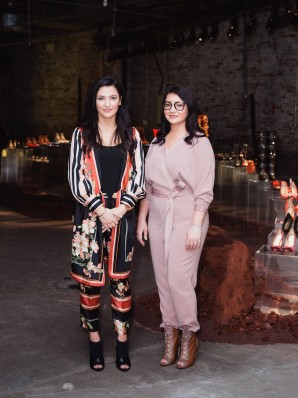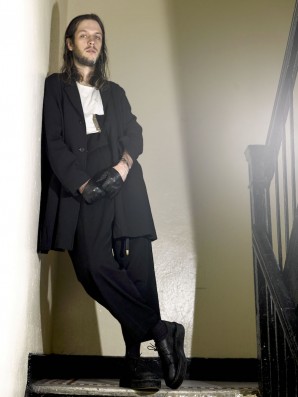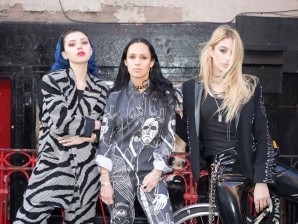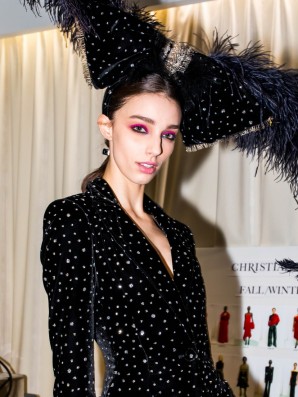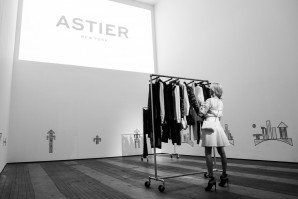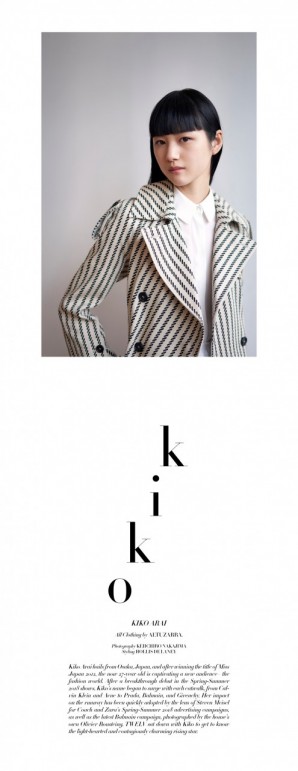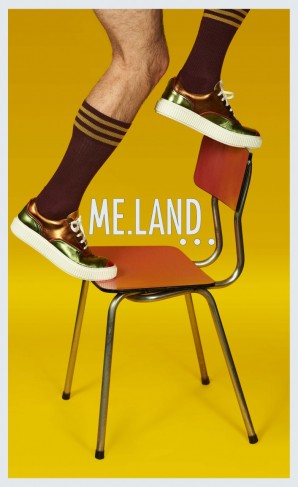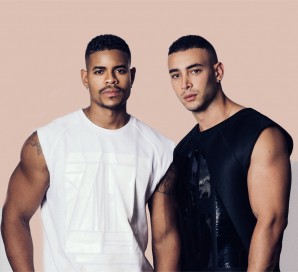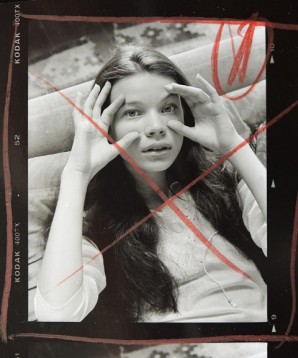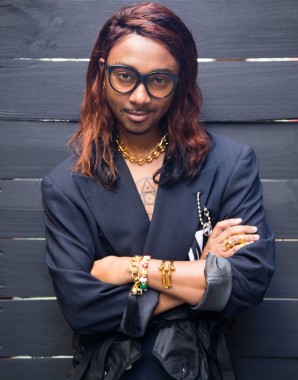TWELV sits down with founders of Parlor Social Club Jan Cieslikiewicz and Frederick Ghartey to give a glimpse into the story of co-founders living in New York City.
MICHEL GONDRY INTERVIEW
“MAYBE WE CAN BE IMMERSED IN MOVIES BECAUSE WE’RE USED TO DREAMING.”
The ever-surprising Michel Gondry flexes his creative muscle by shifting between blockbuster (Eternal Sunshine of the Spotless Mind) and art house films (The Science of Sleep), music videos (Björk: Volumen), and documentaries (Block Party with Dave Chappelle) with equal dexterity. His latest release, The We and the I, combines elements of documentary and fiction, using a cast of amateur actors from a community center in the Bronx and telling their stories over the course of an after-school bus ride. His upcoming Mood Indigo, starring Audrey Tautou and Romain Duris, promises to return us to familiarly surreal Gondry territory.
TWELV spoke with Michel about his recent and upcoming films, the connection between film and dreaming, and the importance of making magic in front of the camera.
How did the idea of The We and the I come about?
I got the idea when I was riding a bus in Paris 20 years ago. I think everyone’s experienced being on a bus when a full class of kids takes over. I paid attention to what was said, and as obnoxious as the situation was in the begin- ning, it got more and more interesting as the kids left the bus. The two last kids were sitting behind me and I could hear their conversation, I saw how the dynamic had changed as kids got off.
What are you working on now?
I’m finishing a movie in Paris called Mood Indigo, based on the very famous French novel called “L’écume des Jours” or “The Foam of Days”. It’s a very romantic story, told in a surrealist way. The feelings of the main character are reflected on the place where they live, their apartment is sort of transforming as this girl is being consumed by her sickness.
How did you get involved in that?
The woman who handles the heritage of this writer came to me and asked, because some of my movies are close to the universe of this writer—which is true because I read it when I was an adolescent and he had a great influence on my imagination.
You’re known for your exploration of dreams, and your incorporation of a lot of surrealistic, dreamlike elements into your work. Why do dreams interest you?
I’ve always been intrigued by them. When I started to make movies, I noticed that the way we dream is closer to the way films are made than to waking life—there is transition, and you can go from one space to another in dreams, when in reality there’s one continuity. Maybe we can be immersed in movies because we’re used to dreaming.
You see a connection between dreaming and film as a medium?
Yeah, it’s the way we forget so quickly when the film starts that it’s a juxtaposition of separate pieces, you forget about that, and forget you’re sitting there watching a screen, and you get absorbed. That’s not how you experience life. In life, you don’t jump from one scene to another.
It seems like something you often explore is the way memories, or stories and ideas, become distorted, and how the distortion ends up becoming a reality.
I think I’m more skeptical than average when someone tells me a story that seems to be extraordinary or magical. I al- ways keep in mind that strong element that’s created when a story is told and repeated. People always forget this element in the equation, that each time a story is repeated a layer is added, so the imaginary can become real.
Do you make use of that in your work?
Yes, I’m very intrigued by that. Let’s say somebody is talk- ing to me and because of my lack of good English, I have to be creative to keep making sense, to keep understanding the conversation. This work, I find quite creative—you have a glimpse of continuity and then you have to create bridges from your own imagination to try to make sense of some- thing. A lot of optical illusions come from that. Your brain is really wired to interpret and make sense of everything you see, so when you see an image that doesn’t make sense to you, you try in different ways to make sense out of it. You create a sort of new reality to explain what you’re looking at.
And illusion is especially interesting in your work. I was just watch- ing the music video you did with Paul McCartney and your expla- nation of how it was done—how you created the effect of ghosts us- ing reflections of people in glass while you were shooting. You make the illusion material, which is rare now in movies.
Now when you see a screen, you’re expecting to see any- thing possible. You can’t be surprised because you know images can be built from scratch. But if you look at reality and see something illogical, you have to figure it out. Even though the work I do ends up on the screen, I try to create that feeling of disbelief before the image is shot and pro- jected. You can always believe something was done in post- production, but if those images are created in reality, you can feel the effect; you feel that the magic existed before it was shot and the camera was just there to transmit it.
It’s very ropes-and-pulleys, real magic.
It’s like when you’re watching puppets, you know they’re controlled by strings, but they have a very sort of scary life— even though you know how it’s made you can’t help but feel that the puppet is alive. I try to create that when I create an effect for the screen.
What’s something you hope for all your work to accomplish?
I think it’s about how I try to portray a character in the story. I want them to remain as human as possible. In any context or any story I’m trying to tell, I want to keep the human- ity. That’s the most important quality to me, the feeling of closeness to the actor or the character when you watch the film.
Where do you create that feeling? Does it start in the writing?
It happens in all the stages, the writing, the shooting, the acting, the directing. This particular element maybe hap- pens more during the shooting. I try to get people to be themselves as much as I can.
How has your work evolved since you began as a director?
I’ve been going back and forth between bigger and smaller movies and between documentaries and fiction, and I al- ways try to learn from one project and apply it to another. I try to make the moment happen in real life, so when you’re watching the movie you don’t feel you’re being told a story step-by-step, you feel like you’re watching life unfolding. But analyzing my own film is really next to impossible, be- cause I have memories of the experience from the begin- ning. Even when I watch movies by other people, some- times I have to forget about the process.
As a director is it difficult to objectively watch movies by other di- rectors?
Not always, but very often. I remember one day before I was a director, I realized that for every image you see on TV or in a movie, there’s an actor, there’s a camera, and then behind the camera there are fifty people watching silently. I’m very sorry, I shouldn’t have told that to you. Next time you watch a movie it’s going to kill it for you.
I know, you’ve ruined it!
I’m so sorry, I’m sure you’ll forget again after a while.
WRITTEN BY CHARLOTTE O’DONNELL
EDITED BY ERINA NAKAZAWA
related posts
Keiichiro Nakajima interview
Keiichiro Nakajima is a photographer and director based in Japan, represented by a management and production company called Signo, Inc, which is one of the largest and leading artist management...
SHIN FUJIYAMA Founder of Students Helping Honduras INTERVIEW
Japanese-American philanthropist Shin Fujiyama co-founded Students Helping Honduras with his sister Cosmo Fujiyama.
NEW TYPE #36: Mônot - ELI MIZRAHI INTERVIEW
Beginning with his childhood in Lebanon, Eli Mizrahi garnished inspiration from across the globe to debut his evening wear brand, Mônot, last fall.
RMK CREATIVE DIRECTOR: KAORI INTERVIEW
KAORI is a renowned make-up artist and the creative director of RMK beauty, a flourishing Japanese makeup and skincare brand that is now sold worldwide.
MICHEL GONDRY INTERVIEW
“MAYBE WE CAN BE IMMERSED IN MOVIES BECAUSE WE’RE USED TO DREAMING.”
JEAN PAUL GAULTIER EXCLUSIVE INTERVIEW
It has become almost useless and banal to introduce Jean-Paul Gaultier.The mere mention of his name alone elicits a constellation of images that have become part of our mind and imagination since...
NEW TYPE #35: DARA SENDERS INTERVIEW
Dara Senders, the designer behind the eponymously titled, all size inclusive brand that launched in 2018, has always been obsessed with fashion.
NEW TYPE #35: NTTE HATS
From a small city near Milan to Downtown New York, Paolo, Designer and creater of NTTE Hatsdiscovered his passion for hats and anything vintage at a young age.
NEW TYPE #34 : BEAU WATSON
1. As a new designer, how do you hope to distinguish yourself among other designers?
NIAN FISH INTERVIEW
Nian Fish, creative director of KCD, has been, for decades, a pivotal figure in the fashion world, assembling and producing fashion shows that have become cultural benchmarks unto themselves, such...
CESAR LOVE ALEXANDRE INTERVIEW
Cesar Love Alexadre is a duo of visual artists formed by Isabelle Chaput and Nelson Tiberghien.They met at the Gobelins school of Photography in Paris and now based in New York where they work on...
TOM PECHEUX INTERVIEW
TWELV got a special interview from Tom Pecheux. Read as we host interviews and explore the lives of artists who shape the final product - directors, fashion designers, stylists, ...
ANTHONY VACCARELLO INTERVIEW
Anthony Vaccarello was considered as one of the brightest new talent in fashion: he was part of this new generation of talents the whole industry has kept an eye on to see them grow, to see them...
Why is Everyone in Hollywood Buzzing About Actress Malgosia Garnys?
Have you ever felt like you were beautiful and powerful and the universe was conspiring in your best interest, and your opportunities were endless because you’ve lost people you loved...
INTERVIEW: Bigwig Broadway Producer, Jordan Roth and Acclaimed Choreographer, Michelle Dorrance
R.I.P Chek Wu
We at TWELV are deeply saddened to announce the passing of talented photographer, boundless free-spirit, and our friend, Chek Wu.
GatherNYC: Everything We Love About Church With No Weird Stuff
GatherNYC is Everything We Love About Sunday Service With None of the Weird Stuff
NEW TYPE #33: Catherine Casias Inteview
If fashion is an expression of experiences, Catherine Casias has a lot of area to cover. She has excelled as an Olympic volleyball player, a philosophy major, and a fine artist....
Party Czar Carmen D’Alessio, Empress of the Sun and the Queen of the Night
You may not know Carmen D’Alessio by name.
IKEMEN #39: JORDAN HENRIQUEZ
IKEMEN (ē´k´mɛn): Japanese Slang
"REALLY, REALLY, RIDICULOUSLY GOOD LOOKING PEOPLE"
IKEMEN #38: WARREN KAY
IKEMEN (ē´k´mɛn): Japanese Slang
"REALLY, REALLY, RIDICULOUSLY GOOD LOOKING PEOPLE"
NEW TYPE #32: ALEXANDER ROYS INTERVIEW
"Introducing an innovative Men’s designer to inspire you with the visions of future and the rise of technology."
Branding in the Worlds of Art and Commerce According to Silvia Mella
Branding is everything. For an entrepreneur, it is the difference between viability and bankruptcy. On social media, we are all our own brands.
Interview: Jackie Yang, Creative Director of Chelsea and Walker
TWELV sat down with Jackie Yang, Creative Director of Chelsea and Walker, in the brand’s New York City...
New Type #31: Angela Mitchell – Krystal and Marilyn Lavoie Interview
We are living in the age of fast fashion, and even Europe’s most storied luxury brands have been moving their factories to Asia to reduce costs.
Ikemen #37: Dominik Halas
IKEMEN (ē´k´mɛn): Japanese Slang
"REALLY, REALLY, RIDICULOUSLY GOOD LOOKING PEOPLE"
New Type #30: Carolina Sarria & Bianca Allen Interview
Both Carolina Sarria and Bianca Allen knew they wanted to become fashion designers from a young age.
Interview & Backstage: Christian Siriano Celebrates 10 Years in Fashion
After the successful launch of his book Dresses to Dream About, a decade-anniversary celebration on the runway, and a whirlwind of striking celebrity looks on the red carpet of...
New Type #29: Jackie Astier Interview
Astier places its identity within the advanced adaptation skills of the modern New York woman.
INTERVIEW: Meet Kiko Arai, Miss Japan-turned Face of Balmain and Zara
Kiko Arai hails from Osaka, Japan, and after winning the title of Miss Japan 2012, the now 27-year old is captivating a new audience– the fashion world.
Interview: Parisian Designer Frédéric Robert's Debut Shoe Collection "ME.LAND"
A vibrant brand of Italian-made shoes for men is emerging this year as one-to-watch.
New Type #28: the Design Duo Behind Maxime Hernandez Interview
The streetwear phenomenon in the fashion establishment is not slowing down anytime soon.
MICHEL NAFZIGER INTERVIEW
With a wealth of experience shooting some for some of fashion's most renowned clients (Yves Saint Laurent, Guy Laroche), ...
IKEMEN #36: Jérôme LaMaar
IKEMEN (ē´k´mɛn): Japanese Slang
"REALLY, REALLY, RIDICULOUSLY GOOD LOOKING PEOPLE"

